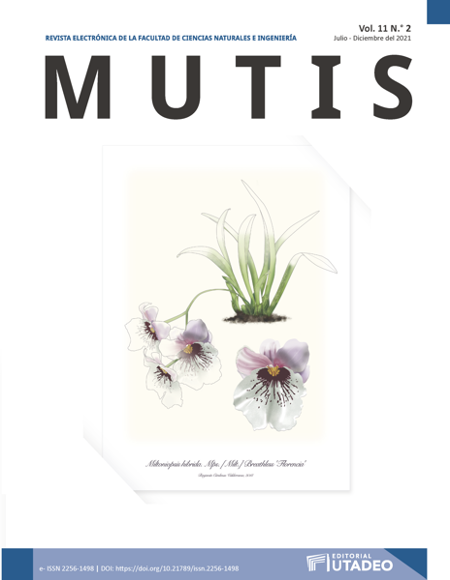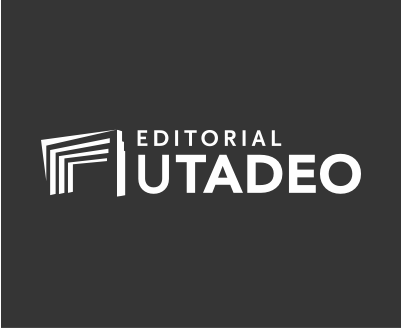
Esta obra está bajo una licencia internacional Creative Commons Atribución-NoComercial-CompartirIgual 4.0.
Esta obra está bajo una licencia internacional Creative Commons Atribución-NoComercial-CompartirIgual 4.0.
Resumen
Colombia es uno de los mayores productores de café en el mundo, con un mercado que superó los 13,9 millones de sacos en 2020. Sin embargo, en el proceso de beneficio húmedo del café se emplean grandes cantidades de agua, aproximadamente 4.154.354 m3, en las fases de despulpado, lavado y transporte del grano, generando aguas residuales contaminadas que tienen poco tratamiento antes de ser vertidas a las fuentes hídricas. En el presente trabajo se buscó aislar especies de microalgas que crezcan en estos ambientes, utilizar estas especies en procesos de depuración de aguas residuales del proceso de lavado del café y buscar una aplicación de la biomasa resultante. Para la obtención de las cepas de microalgas se utilizaron técnicas de agotamiento. Con el fin de evaluar su capacidad de depuración, estas fueron cultivadas en agua residual de diferentes concentraciones bajo condiciones de laboratorio, determinando la remoción de materia orgánica. Adicionalmente, se caracterizó bioquímicamente la biomasa algal para determinar posibles usos biotecnológicos o industriales. Se encontró dos Chloroficeaes cocales, Parachlorella kessreli y Desmodesmus armatus, las cuales demostraron una alta eficiencia en la remoción de nitrógeno total (> 50 %) y fósforo total (> 70 %), así como una disminución significativa de la DQO (> 70 %) en los mejores tratamientos. Finalmente, se encontró para Parachlorella kessreli alta producción de lípidos y para Desmodesmus armatus alta producción de proteína.
Citas
Andersen, R. (2005). Algal culturing techniques. Elsevier Academic Press.
Ardila, L., Godoy, R. D., & Montenegro, L. C. (2017). Sorption capacity measurement of Chlorella vulgaris and Scenedesmus acutus to remove chromium from tannery wastewater. IOP Conf. Series: Earth and Environmental Science, 83, 012031. https://doi.org/10.1088/1755-1315/83/1/012031
Arias, D. M., Uggetti, E., García-Galán, M. J., & García J. (2017). Cultivation and selection of cyanobacteria in a closed photobioreactor used for secondary effluent and digestate treatment. Science of The Total Environment, 587-588, 157-167. https://doi.org/10.1016/j.scitotenv.2017.02.097
Ashenafi, F. (2019). Treatment of wastewater effluent from coffee industry using anaerobic mixed culture pseudomonas florescence and Escherichia coli bacteria and with gypsum: A case in Dilla- Ethiopia (Tesis de maestría, Addis Ababa Institute of Technology). Repositorio Addis Ababa Institute of Technology.
Bradford, M. M. (1976). A rapid and sensitive method for the quantitation microgram quantities of protein utilizing the principle of protein-dye binding. Crop Journal, 72, 248-254. https://doi.org/10.1016/j.cj.2017.04.003
Byreddy, A., Gupta, A., Barrow, C., & Puri, M. (2016). A quick colorimetric method for total lipid quantification in microalgae. Journal of Microbiological Methods, 125, 28-32. https://doi.org/10.1016/j.mimet.2016.04.002
Cañizares-Villanueva, R. O., Ramos A., Corona, A. I., Monroy, O., de-la-Torre, M., Gomez-Lojero, C., & Travieso L. (1994). Phormidium treatment of anaerobically treated swine wastewater. Water Research, 9(28), 1891-1895. https://doi.org/10.1016/0043-1354(94)90164-3
Chen, C. Y., Kuo, E. W., Nagarajan, D., Ho, S. H., Dong, C. D., Lee, D. J., & Chang, J. S. (2020). Cultivating Chlorella sorokiniana AK-1 with swine wastewater for simultaneous wastewater treatment and algal biomass production. Bioresource Technology, 302, 122814. https://doi.org/10.1016/j.biortech.2020.122814
Chen, Z., Shao, S., He, Y., Luo, Q., Zheng, M., Zheng, M., Chen, B., & Wang, M. (2020). Nutrients removal from piggery wastewater coupled to lipid production by a newly isolated self-flocculating microalga Desmodesmus sp. PW1. Bioresource Technology, 302, 122806. https://doi.org/10.1016/j.biortech.2020.122806
Cheng, Y. S., Zheng, Y., & Vander-Gheynst, J. S. (2011). Rapid quantitative analysis of lipids using a colorimetric method in a microplate format. Lipids, 46(1), 95-103. https://doi.org/10.1007/s11745-010-3494-0
Chew, K. W., Yap, J. Y., Show, P. L., Suan, N. H., Juan, J. C., Ling, T. C., Lee, D. J., & Chang, J. S. (2017). Microalgae biorefinery: High value products perspectives. Bioresource Technology, 229, 53-62. https://doi.org/10.1016/j.biortech.2017.01.006
DuBois, M., Gilles, K., Hamilton, J., Rebers, P., & Smith, F. (1956). Colorimetric method for determination of sugars and related substances. Analytical Chemistry, 28(3), 350-356. https://doi.org/10.1021/ac60111a017
Ferreira, A., Ribeiro, B., Marques, P. A. S., Ferreira, A. F., Dias, A. P., Pinheiro, H. M., Reis, A., & Gouveia, L. (2017). Scenedesmus obliquus mediated brewery wastewater remediation and CO2 biofixation for green energy purposes. Journal of Cleaner Production, 165, 1316-1327. https://doi.org/10.1016/j.jclepro.2017.07.232
Gerchakov, S., & Hatcher, P. (1972). Improved technique for analysis of carbohydrates in sediments. Limnology and Oceanography, 17(6), 938-943. https://doi.org/10.4319/lo.1972.17.6.0938
Gómez-Pérez, C., Espinosa, J. J., Montenegro, L. C., & Van-Boxtela, J. B. (2017). Twisted tubular photobioreactor fluid dynamics evaluation for energy consumption minimization. Algal Research, 27, 65-72. https://doi.org/10.1016/j.algal.2017.08.019
González-Delgado, A. D., Barajas-Solano, A., & Ardila-Álvarez, A. M. (2017). Producción de biomasa y proteínas de Chlorella vulgaris Beyerinck (Chlorellales:Chlorellaceae) a través del diseño de medios de cultivo selectivos. Corpoica Ciencia y Tecnología Agropecuaria, 18(3). https://doi.org/10.21930/rcta.vol18_num3_art:736
Gorain, P. C., Paul, I., Singh, P., & Pala, R. (2019). An integrated approach towards agricultural wastewater remediation with fatty acid production by two cyanobacteria in bubble column photobioreactors. Algal Research, 42, 101-594. https://doi.org/10.1016/j.algal.2019.101594
Guccione, A., Biondi, N., Sampietro, G., Rodolfi, L., Bassi, N., & Tredici, M. R. (2014). Chlorella for protein and biofuels: from strain selection to outdoor cultivation in a green wall panel photobioreactor. Biotechnology for Biofuels, 7, 84. https://doi.org/10.1186/1754-6834-7-84
Hoshina, R., Kamako, S. I., & Imamura, N. (2004). Phylogenetic position of endosymbiotic green algae in Paramecium bursaria Ehrenberg from Japan. Plant Biology, 6(4), 447-453. https://doi.org/10.1055/s-2004-820888
Jenniffer, A. A., Chandran, T., Muthunarayanan, V., Ravindran, B., Nguyen, V. K., Nguyen, X. C., Bui, X. T., Ngo, H. H., Nguyen, X. H., Chang, S. W., & Nguyen, D. D. (2020). Evaluation of efficacy of indigenous acidophile- bacterial consortia for removal of pollutants from coffee cherry pulping wastewater. Bioresource Technology Reports, 11(September), 100533. https://doi.org/10.1016/j.biteb.2020.100533
Kulkarni, S., & Nikolov, Z. (2018). Process for selective extraction of pigments and functional proteins from Chlorella vulgaris. Algal Research, 35, 185-193. https://doi.org/10.1016/j.algal.2018.08.024
Lynch, F., Santana-Sánchez, A., Jämsä, M., Sivonen, K., Aro, E. A., & Allahverdiyeva, Y. (2015). Screening native isolates of cyanobacteria and a green alga for integrated wastewater treatment, biomass accumulation and neutral lipid production. Algal Research, 11, 411-420. https://doi.org/10.1016/j.algal.2015.05.015
Melgarejo, L. (2010). Experimentos en fisiología vegetal. Universidad Nacional de Colombia.
Mishra, S., Suh, W., Farooq, W., Moon, M., Shrivastav, A., Park, M., & Yang, J. (2014). Rapid quantification of microalgal lipids in aqueous medium by a simple colorimetric method. Bioresource Technology, 155, 330-333. https://doi.org/10.1016/j.biortech.2013.12.077
Mousavi, S. A., Sarshad, M., & Soltani, S. (2020). Negative impacts of nomadic livestock grazing on common rangelands’ function in soil and water conservation. Ecological Indicators, 110, 105946. https://doi.org/10.1016/j.ecolind.2019.105946
Mtaki, K., Kyewalyanga, M. S., & Mtolera, M. S. P. (2021). Supplementing wastewater with NPK fertilizer as a cheap source of nutrients in cultivating live food (Chlorella vulgaris). Annals of Microbiology, 71(7). https://doi.org/10.1186/s13213-020-01618-0
Navitha, K. R., & Kousar, H. (2018). A comparative study on the potential of Aspergillus niger and Aspergillus flavus for the treatment of coffee processing effluent. International Journal of Environment, Ecology, Family and Urban Studies, 8(4), 17-22. https://doi.org/10.24247/ijeefusaug20182
Nur, M. M. A., & Buma, A. G. J. (2019). Opportunities and challenges of microalgal cultivation on wastewater, with special focus on palm oil mill effluent and the production of high value compounds. Waste and Biomass Valorization, 10(8), 2079-2097. https://doi.org/10.1007/s12649-018-0256-3
Palomino, A., Montenegro, L. C., & Godoy, R. D. (2019). Evaluation of yield-predictive models of biocrude from hydrothermal liquefaction of microalgae. Algal Research, 44, 101669. https://doi.org/10.1016/j.algal.2019.101669
Pires, J. F., Viana, D. C., Braga, R. A., Schwan, R. F., & Silva, C. F. (2021). Protocol to select efficient microorganisms to treat coffee wastewater. Journal of Environmental Management, 278(P2), 111541. https://doi.org/10.1016/j.jenvman.2020.111541
Pozzobona, V., Levasseura, W., Guerina, C., Gaveau-Vaillantb, N., Pointchevala, M., & Perréa, P. (2020). Desmodesmus sp. pigment and FAME profiles under different illuminations and nitrogen status. Bioresource Technology Reports, 10, 100409. https://doi.org/10.1016/j.biteb.2020.100409
Rodriguez, N. V., Sanz, J. R., Oliveros, C. E., & Ramirez, C. G. (2015). Beneficio del café en Colombia. Federación Nacional de Cafeteros/Cenicafé.
Safi, C., Camy, S., Frances, C., Montero-Varela, M., Calvo-Badia, E., Pontalier, P., & Vaca-Garcia C. (2014). Extraction of lipids and pigments of Chlorella vulgaris by supercritical carbon dioxide: influence of bead milling on extraction performance. Journal of Applied Phycology, 26, 1711-1718. https://doi.org/10.1007/s10811-013-0212-3
Sepehri, A., Sarrafzadeh, M. H., & Avateffazeli, M. (2020). Interaction between Chlorella vulgaris and nitrifying-enriched activated sludge in the treatment of wastewater with low C/N ratio. Journal of Cleaner Production, 247, 119164. https://doi.org/10.1016/j.jclepro.2019.119164
Serrano, L. M., Montenegro, L. C., & Godoy, R. D. (2020). Effect of CO2 aeration, irradiance, and photoperiod on biomass and lipid accumulation in a microalga autotrophically cultured and selected from four Colombian-native strains. Bioresource Technology Reports, 12, 100578. https://doi.org/10.1016/j.biteb.2020.100578
Sun, X., Li, P., Liu, X., Wang, X., Liu, Y., Turaib, A., & Cheng, Z. (2020). Strategies for enhanced lipid production of Desmodesmus sp. mutated by atmospheric and room temperature plasma with a new efficient screening method. Journal of Cleaner Production, 250, 119509. https://doi.org/10.1016/j.jclepro.2019.119509
Wang, Y., Wang, S., Sun, L., Sun, Z., & Li, D. (2020). Screening of a Chlorella-bacteria consortium and research on piggery wastewater purification. Algal Research, 47, 101840. https://doi.org/10.1016/j.algal.2020.101840
Westblade, L. F., Ranganath, S., Dunne, W. M., Burnham, C. A., Fader, R., & Ford, B. A. (2015). Infection with a chlorophyllic eukaryote after a traumatic freshwater injury. The New England Journal of Medicine, 372(10), 982-984.
Wu, L., Zhu, Q., Yang, L., Li, B., Hu, C., & Lan S. (2018). Nutrient transferring from wastewater to desert through artificial cultivation of desert cyanobacteria. Bioresource Technology, 247, 947-953. https://doi.org/10.1016/j.biortech.2017.09.127
Yamamoto, M., Nozaki, H., Miyazawa, Y., Koide, T., & Kawano, S. (2003). Relationship between presence of a mother cell wall and speciation in the unicellular microalga Nannochloris (Chlorophyta). Phycology, 39, 172-184. https://doi.org/10.1046/j.1529-8817.2003.02052.x
Zhang, Y., Huang, Z., Zheng, H., Wang, Q., & Li, A. (2020). Growth, biochemical composition and photosynthetic performance of Scenedesmus acuminatus under different initial sulfur supplies. Algal Research, 45, 101728. https://doi.org/10.1016/j.algal.2019.101728
Descargas
Datos de publicación
Perfil evaluadores/as N/D
Declaraciones de autoría
- Sociedad académica
- Universidad de Bogotá Jorge Tadeo Lozano
- Editorial
- Universidad de Bogotá Jorge Tadeo Lozano

 PDF
PDF
 FLIP
FLIP
 XML
XML













